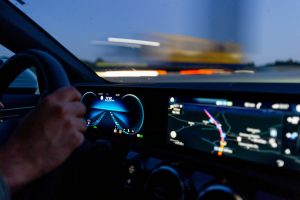The Future of Vehicle-to-Everything (V2X) Communication
The automotive industry has been rapidly evolving in recent years, with the introduction of advanced technologies like autonomous vehicles, electrification, and connectivity. One such technology that is gaining traction is Vehicle-to-Everything (V2X) communication. V2X refers to the exchange of information between vehicles, infrastructure, and other connected devices. This technology has the potential to revolutionize the way vehicles communicate with each other and the world around them. In this article, we will explore the future of V2X communication and its impact on the automotive industry.
The Evolution of V2X Communication
V2X communication emerged from the concept of Vehicle-to-Vehicle (V2V) communication, which enables vehicles to exchange information with each other to enhance safety on the road. In recent years, this concept has evolved to include Vehicle-to-Infrastructure (V2I) and Vehicle-to-Pedestrian (V2P) communication, forming the term V2X. These advancements are made possible by the rapid development of wireless communication technologies, such as 5G, which enables faster and more reliable communication between vehicles and their surroundings.
Enhanced Safety and Efficiency
V2X communication has the potential to significantly improve road safety and efficiency. With V2V communication, vehicles can exchange data such as speed, direction, and location, allowing them to detect and avoid potential collisions. V2I communication enables vehicles to communicate with traffic signals, road signs, and other roadside infrastructure, providing real-time information on traffic conditions, road hazards, and route optimization. This will not only reduce the risk of accidents but also optimize traffic flow, reducing congestion and travel time for drivers.
Enabling Autonomous Vehicles
Autonomous vehicles rely heavily on V2X communication to navigate through traffic. With the ability to communicate with other vehicles and infrastructure, autonomous vehicles can make informed decisions in real-time, contributing to safer and more efficient autonomous driving. V2X communication also enables vehicles to receive information about construction zones, accidents, and other unexpected road conditions, improving the accuracy of their route planning and decision-making capabilities.
Supporting Electrification
With the rise of electric vehicles (EVs), V2X communication can play a crucial role in supporting their integration into the grid and promoting sustainable energy management. V2X technology enables EVs to communicate with charging infrastructure, allowing them to charge when the demand for electricity is low, reducing the strain on the grid. This also opens up the possibility of vehicle-to-grid (V2G) communication, where EVs can supply energy back to the grid during peak demand periods, contributing to a more stable and sustainable energy grid.
Challenges and Roadblocks
Although V2X communication holds great promise, there are still some challenges and roadblocks that need to be addressed. One major challenge is the lack of standardization. Currently, there are multiple competing technologies and standards for V2X communication, making it challenging for different systems to communicate with each other. This could potentially hinder the widespread adoption and implementation of V2X technology.
Privacy and security are also major concerns when it comes to V2X communication. As vehicles become more connected, they become vulnerable to cyber-attacks, which could have disastrous consequences. Therefore, it is crucial to develop robust security protocols to protect the data being transmitted between vehicles and infrastructure.
The Road Ahead
The future looks bright for V2X communication, with major automakers, technology companies, and governments investing heavily in its development. The European Union is aiming to make V2X communication mandatory in all new vehicles by 2022, and other countries are also following suit.
Moreover, V2X technology has the potential to extend beyond the automotive industry. It could be used in smart cities, where it can help manage traffic flow, reduce emissions, and improve public transportation. V2X could also be leveraged in logistics and fleet management, enabling better tracking and coordination of goods delivery.
Conclusion
V2X communication is transforming the automotive industry, making vehicles smarter, safer, and more efficient. With advancements in technology and continued efforts in standardization and security, V2X is set to play a significant role in shaping the future of transportation. As we move towards a more connected world, V2X communication will continue to evolve, revolutionizing the way we travel and interact with our environment.










